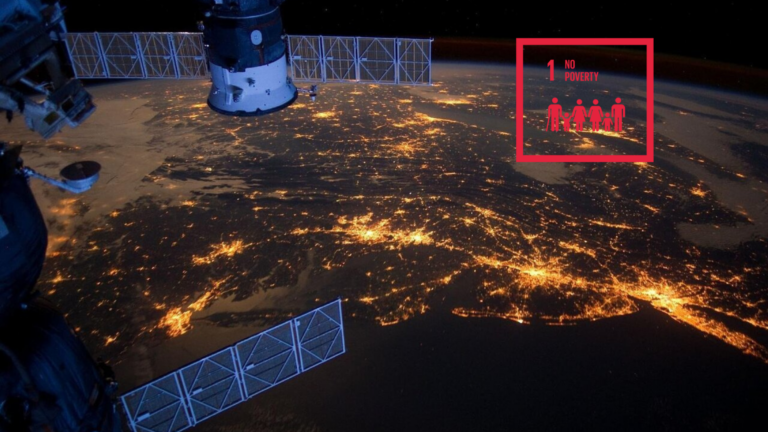
Written by Tandia Pritchard
As global temperatures rise and the world faces mounting challenges caused by climate change, questions are emerging about whether the infrastructure required to power artificial intelligence tools are exploiting developing countries, and damaging the environment.
AI has been integrated into many aspects of society, with its relentless growth delivering tools to help address the impacts of climate change. But the data centres which support AI have enormous carbon footprints and emissions, and are escalating energy demands.

©Mongobay, Alina Peter Daati uses the EarthRanger spatial platform to track wildlife.
AI is already revolutionising efforts to combat some of the most pressing climate challenges. For example, Google Research uses AI models to accurately forecast riverine flooding up to seven days in advance, with recent developments making this possible in data-scarce regions in Africa. By combining hydrologic and inundation models, it can accurately predict river flow, flood extent and water levels. FloodAI is integrated into the UN Satellite Centre’s flood operations and has been instrumental in countries such as Bangladesh, Mozambique and Nepal. During the 2021 floods in Myanmar and Nepal, FloodAI processed over six times the volume of satellite images compared with previous methods, delivering life-saving updates to vulnerable populations.
AI also holds promise in tackling agricultural challenges arising from intensifying climate pressures. Kuzi, a Kenyan-developed app, utilises AI to predict locust outbreaks by collating data such as soil moisture, humidity and vegetation indices to forecast breeding locations and migration patterns. Farmers receive text alerts three months in advance so they can prepare for the outbreak and safeguard their crops.
In addition, AI is helping to cap certain industrial emissions, a significant contributor to climate change. Fero Labs employs AI-driven Bayesian machine learning to enable manufacturers to reduce the use of mined materials in the production of recycled steel, curtailing CO2 emissions by an estimated 450,000 tonnes annually. This reflects the potential of AI to expedite climate action and progress towards the Sustainable Development Goals.
Data centres, vast warehouses filled with servers to store and process the data required for AI operations, are popping up throughout the developing world. These power-hungry facilities require colossal amounts of electricity to power the machinery and water for cooling systems.
According to the UN’s Greening Digital Companies Report 2024, greenhouse gas emissions from leading cloud providers have increased by 62% since 2020, with electricity usage rising by 78% since 2023. Deloitte Global warns that global electricity use by data centres is projected to nearly triple in the next decade, raising concerns over their environmental footprint.
Some analysts have dubbed this proliferation of data centres in the Global South “data colonialism”, as local communities bear the brunt of the ecological costs, while foreign companies reap the rewards.
For example, Microsoft, in partnership with UAE-based AI firm G42, have pumped $1 billion into initiatives in Kenya, including plans for a ‘green’ data centre to support the East Africa Cloud Region.
Recently, Google’s plan to build a new data centre in Uruguay came under fire from activists due to its high water consumption. The planned centre required a staggering 228 litres per second, or over 7 billion litres annually to cool the facility, amid the worst drought on record in the country. In response to this pressure, Google adjusted its plans by resizing the data centre and switching from a water-based cooling system to a less resource-intensive air cooling system.

© Countervortex, Protests over data centre in Uruguay
The COP 29 Declaration on Green Digital Action calls for equitable access to green digital solutions for developing nations, but there is a lack of standardisation in assessing the environmental effects of AI, and the exact impacts are unknown. Data centre owners are not forthcoming with data, and the rapidly changing AI technology and applications further complicate policymaking.

© Total Environmental Cooling, Data Centre
AI-generated solutions show undeniable promise in combating the impacts of climate change, including disaster preparedness, protecting crops, and reducing industrial emissions.
However the pressure on water and energy resources raise ethical questions about whether tech companies and Governments should balance immediate needs like providing clean drinking water, and powering healthcare facilities against the longterm economic goals.
In Uruguay, Google scaled back their proposal and opted for a more efficient data centre, demonstrating that exerting pressure on tech companies can lead to greener outcomes. Pressure too must be exerted on governments to incentivise renewable energy in data centres and infrastructure. The use of AI-powered climate solutions must be balanced with the need for safeguarding vital resources in the developing world.
Are you working on innovative solutions for climate action or sustainability? We can help share your story. Get in touch here.

© Green Digital Action Logo

Network Hub, 300 Kensal Road, London, W10 5BE, UK
We deliver comprehensive communications strategies that deliver on your organisation’s objectives. Sign up to our newsletter to see the highlights once a quarter.